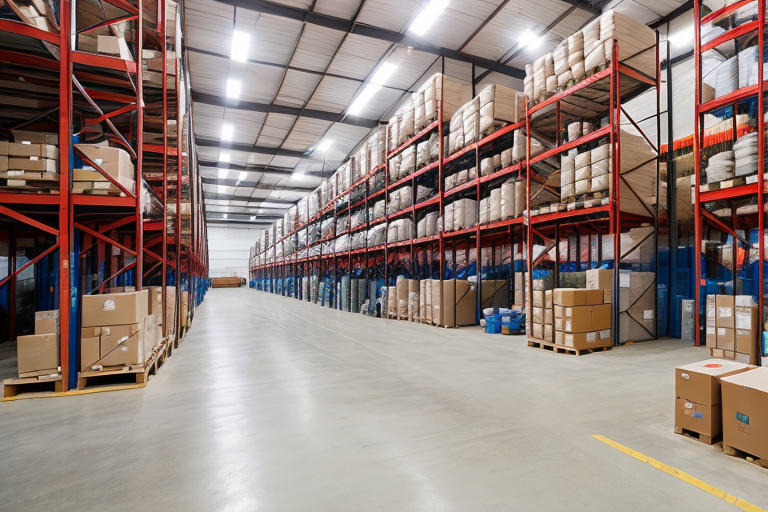Benefits of Automating Warehouse Management
Automation is becoming increasingly popular in the warehouse management industry, as it can help streamline processes and increase efficiency. Automation can also reduce labor costs, improve accuracy, and provide better customer service. In this section, we will discuss the benefits of automating warehouse management.Minimal Training for Order Fillers
One benefit of automating warehouse management is that it requires minimal training for order fillers. Automated systems are designed to be user-friendly and intuitive so that anyone can learn how to use them quickly and easily. This reduces the amount of time spent on training new employees, which in turn saves money for employers. Additionally, automated systems are often equipped with built-in safety features that can help prevent accidents and injuries in the workplace.Streamlining the Processing of Orders
Another benefit of automating warehouse management is that it streamlines the processing of orders. Automated systems allow warehouses to process orders more quickly and accurately than manual methods. This helps to reduce labor costs and improve customer satisfaction by ensuring orders are filled correctly and delivered on time. Additionally, automated systems can provide real-time updates on inventory levels, allowing warehouses to adjust their stocking strategies accordingly in order to meet customer demand.Status Notifications
Finally, automated systems can provide status notifications throughout the entire order fulfillment process. This helps customers stay informed about their orders and makes sure that they receive their products as soon as possible. Additionally, automated systems can generate reports that provide detailed insights into warehouse operations such as inventory levels, average lead times, and product availability. This data can then be used to make informed decisions about how best to manage a warehouse’s resources in order to maximize efficiency and minimize costs.Automating warehouse management can reduce labor costs, improve accuracy, and provide better customer service. Minimal training for order fillers, streamlining the processing of orders, and status notifications.
Examples of Logistics Miracles Made Possible With Real Time Data
Miracle #1: Customer Service
Real-time data can provide a number of benefits for customer service. For example, customers can be informed in real-time when their order has been shipped and delivered. This allows customers to plan accordingly and be prepared to receive the package. Additionally, customer service representatives can access data quickly and accurately to answer questions about orders or shipments. This ensures that customers are satisfied with their experience and that they will continue to do business with the company. Another benefit of real-time data is that it can help reduce customer complaints. By providing accurate information about orders, companies can address any issues quickly and efficiently. This reduces the amount of time spent dealing with customer complaints, allowing companies to focus on providing quality customer service. Finally, real-time data can help companies better understand their customers’ needs and preferences. By tracking customer behavior, companies can tailor their services to better meet the needs of their customers. This helps ensure that customers have a positive experience with the company and are more likely to return in the future.Miracle #2: Labor Management
Real-time data also provides numerous benefits for labor management. For example, managers can track employee performance in real-time, allowing them to identify areas where employees may need additional training or support. This helps ensure that employees are working efficiently and effectively while also reducing costs associated with training and development. Furthermore, real-time data can help managers identify potential problems before they become major issues. By monitoring employee performance in real-time, managers can spot trends or patterns that may indicate an issue before it becomes a major problem. This allows managers to take action quickly and address any issues before they become too costly or difficult to resolve. Finally, real-time data can provide valuable insights into how different departments are performing relative to each other. By tracking performance across departments, managers can identify areas where one department is underperforming compared to another department or team within the organization. This helps managers make decisions about resource allocation based on actual performance rather than assumptions or guesswork.Miracle #3: Timely and Secure Delivery
Real-time data provides numerous benefits for timely and secure delivery as well. For example, by tracking deliveries in real-time, companies can ensure that packages arrive at their destination on time and without incident. Additionally, by monitoring deliveries closely, companies can be aware of any potential delays or problems before they become an issue for customers or clients. Furthermore, real-time data allows companies to monitor shipments more closely for security purposes as well as ensuring timely delivery of goods. By tracking shipments in real time, companies can detect any unusual activity such as tampering or theft before it becomes a major problem. This helps ensure that goods arrive safely at their destination without any issues along the way. Finally, real-time data provides valuable insights into how different carriers are performing relative to each other as well as how efficient certain routes are compared to others. Companies can use this information to determine which carriers are most reliable and cost effective so they can make informed decisions when selecting carriers for future shipments|
Benefit |
Customer Service |
Labor Management |
Timely & Secure Delivery |
|
Real-time tracking of orders/shipments |
Yes |
Yes |
Yes |
|
Reduced customer complaints |
Yes |
No |
No |
|
Better understanding of customers’ needs and preferences |
Yes |
No |
No |
|
Track employee performance in real-time |
No |
Yes |
No |
|
Spot trends/patterns before they become major issues |
No |
Yes |
Yes |
|
Monitor performance across departments |
Yes |
No |
No |


